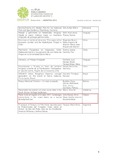| dc.description.abstract | The relationship between tourism and sites of cultural and natural significance exists since the
time of Greek Antiquity and strongly encourages landscape restoration of urban sites. This
paper provides an up-to-date overview of the relationship between cultural landscape heritage
and tourism, describes strategies that can lead to sustainable tourism where cultural heritage is
a key factor, and formulates a methodology for landscape intervention, with a particular focus on
the dynamics of landscape transformation and the rigorous reading of the ecological and
cultural dimensions of the landscape of the town of Pafos, European Capital of Culture for 2017,
as a major means to generate economic benefits from recreation and tourism. Pafos is a town
with monuments of unique value from every period of its rich cultural tradition where ancient
amphitheaters, agoras, and archeological sites co-exist in harmony with the unique
Mediterranean seashore and the sensitive natural ecosystem of the Akamas peninsula. Pafos
as European Capital of Culture for 2017 aims at developing a strategic sustainable plan to reinvent
the town as a cultural landscape used as a tourist development tool. It will implement an
extensive urban landscape design intervention plan, with the aim of restoring open public
spaces, creating links between important sites and archaeological spaces, and recovering the
lost connection with the natural environment, the land and the sea based on aspects of
sustainable and eco-friendly tourism development. Such a landscape approach tempts to
integrate natural and cultural heritage by recognizing that the current landscape is the product
of long-term and complex interrelationships between people and the environment. This research
may also serve as a basis for future strategic landscape interventions in the urban fabric as a
tourism policy and cultural heritage planning establishing an exclusive linkage to the “sense of
place” and landscape design. | en_UK |


